Abstract
OBJECTIVES. This study evaluated the biological and subjective consequences observed in individual smokers after implementation of a workplace smoking-restriction policy. METHODS. Employees were evaluated for 4 weeks before and 4 weeks after their workplace became smoke-free (n = 34). A comparison group of smokers whose work-site smoking was unrestricted served as controls (n = 33). Daily exposure to tobacco constituents and withdrawal effects were measured. RESULTS. Smokers at the restricted site had verified smoking reduction (mean = four cigarettes per day) and significantly reduced nicotine and carbon monoxide during the work shift. There were increases in ratings of some common withdrawal symptoms (cravings/urges, concentration difficulties, increased eating, depression). No evidence of compensatory smoking during nonwork hours was found. Overall tobacco exposure, as measured in saliva cotinine, showed a nonsignificant 15% decline. CONCLUSIONS. Workplace smoking restriction markedly altered smoking patterns (i.e., reduced daytime smoking) and reduced cotinine levels to an amount consistent with cigarette reduction. Thus, work-site smoking restriction may promote meaningful, albeit limited, reductions in tobacco exposure and consequent health risks.
Full text
PDF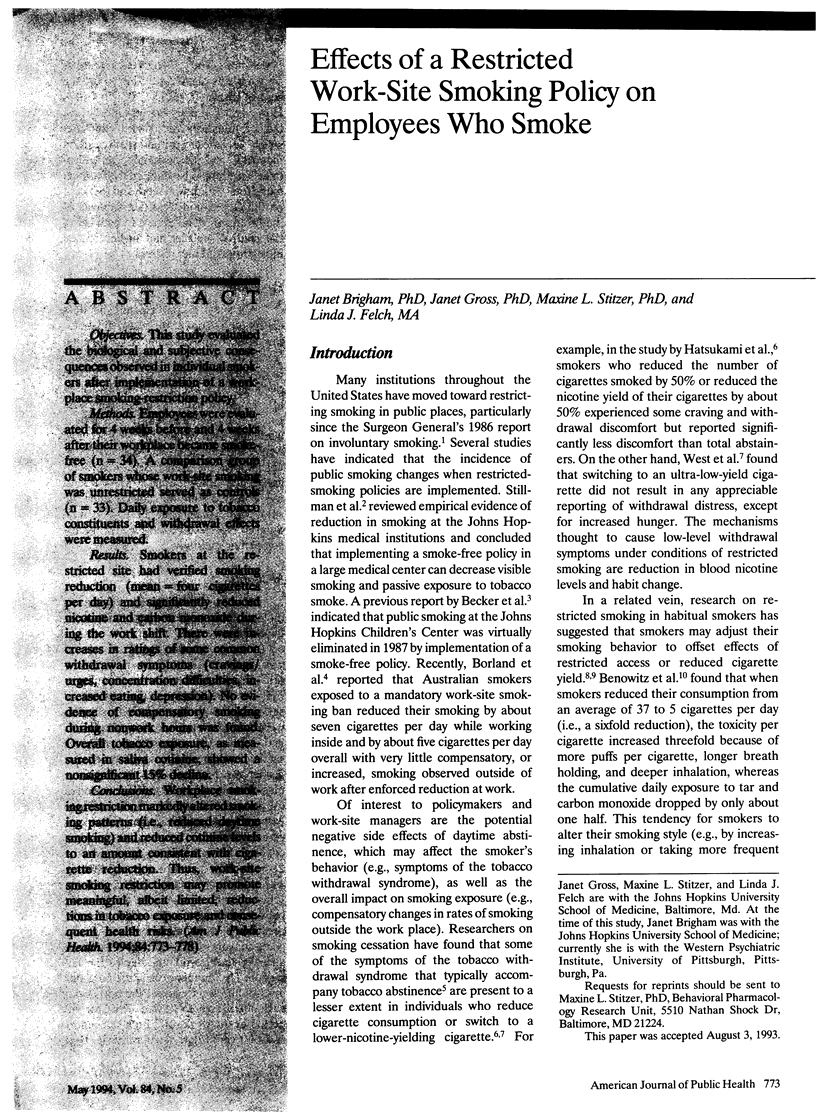
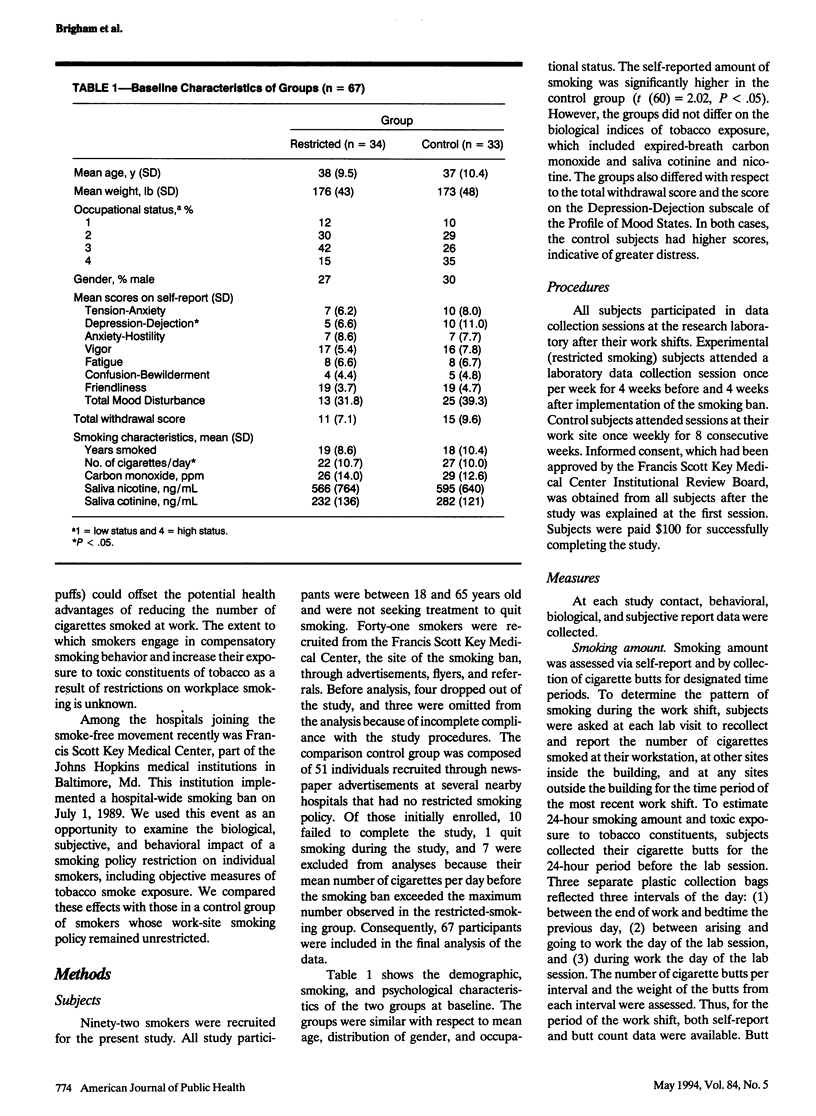
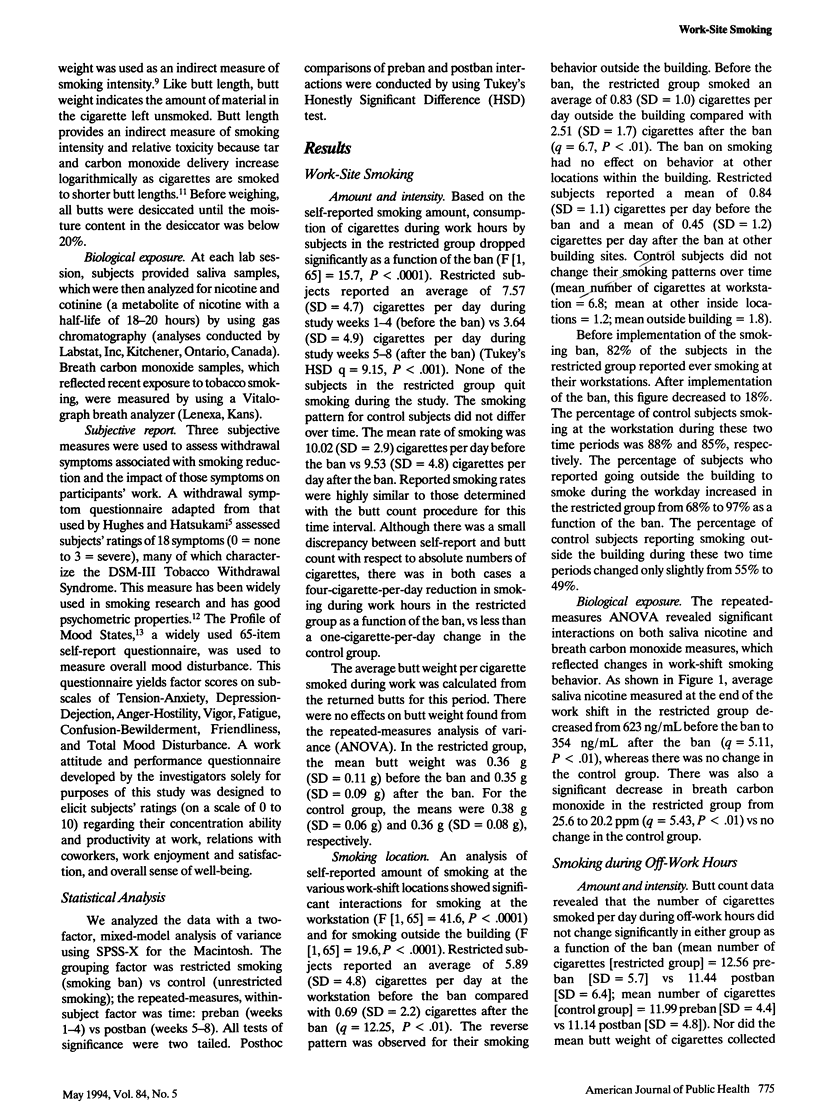
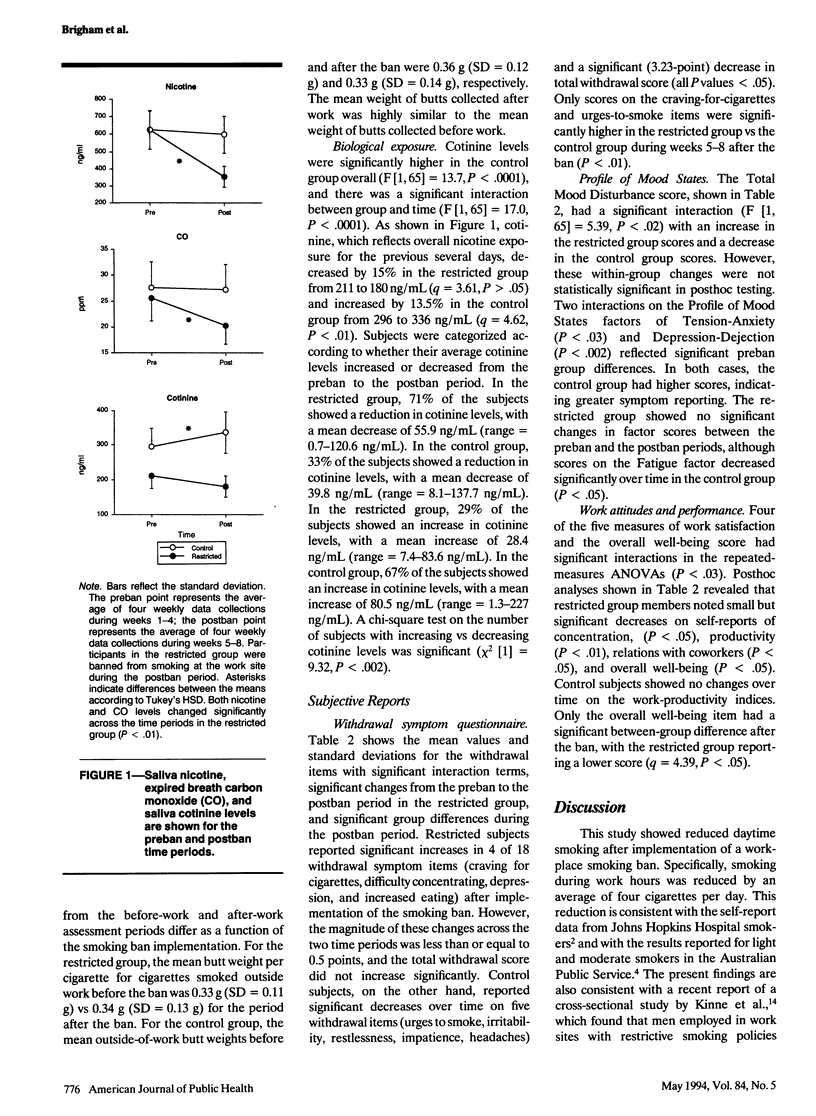
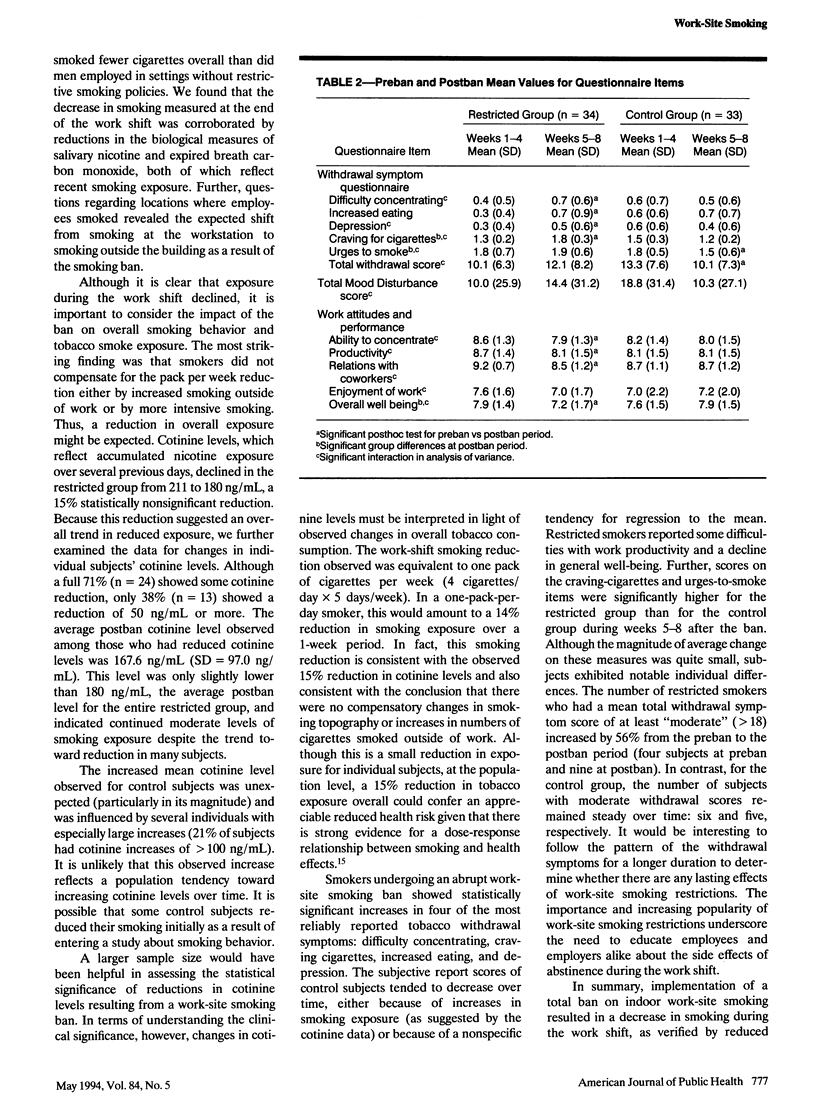
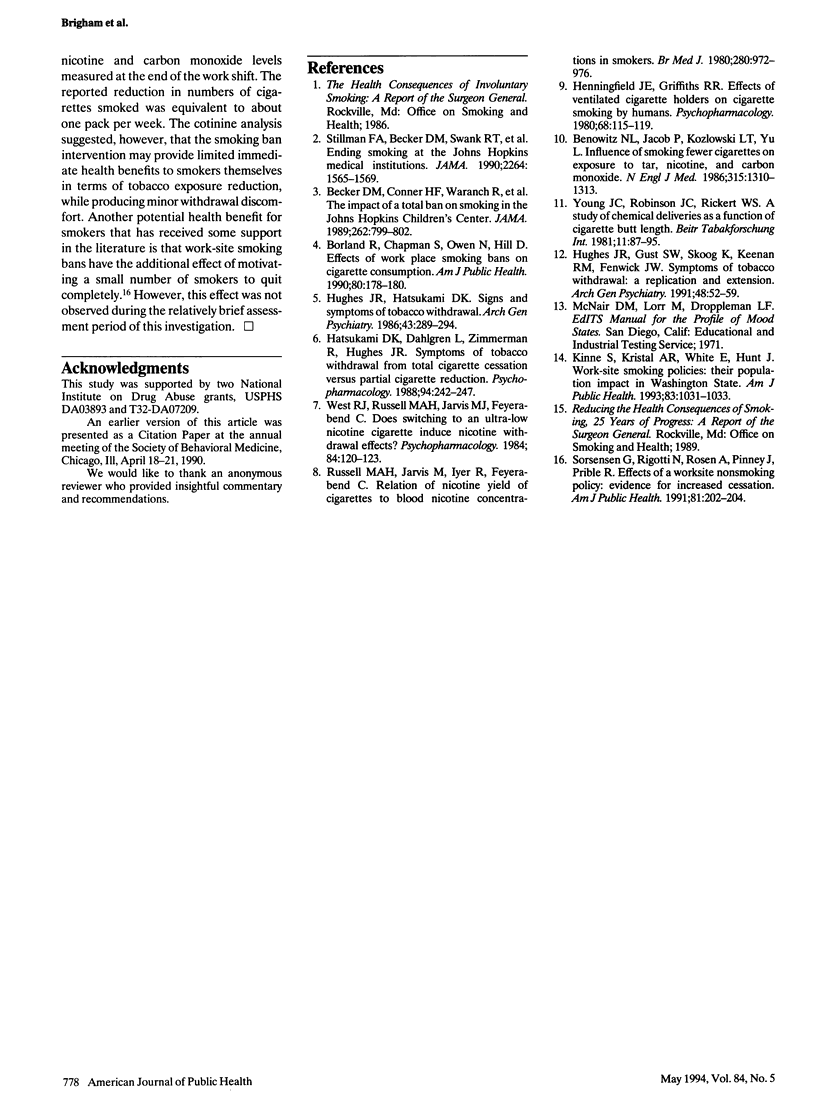
Selected References
These references are in PubMed. This may not be the complete list of references from this article.
- Becker D. M., Conner H. F., Waranch H. R., Stillman F., Pennington L., Lees P. S., Oski F. The impact of a total ban on smoking in the Johns Hopkins Children's Center. JAMA. 1989 Aug 11;262(6):799–802. [PubMed] [Google Scholar]
- Benowitz N. L., Jacob P., 3rd, Kozlowski L. T., Yu L. Influence of smoking fewer cigarettes on exposure to tar, nicotine, and carbon monoxide. N Engl J Med. 1986 Nov 20;315(21):1310–1313. doi: 10.1056/NEJM198611203152102. [DOI] [PubMed] [Google Scholar]
- Borland R., Chapman S., Owen N., Hill D. Effects of workplace smoking bans on cigarette consumption. Am J Public Health. 1990 Feb;80(2):178–180. doi: 10.2105/ajph.80.2.178. [DOI] [PMC free article] [PubMed] [Google Scholar]
- Hatsukami D. K., Dahlgren L., Zimmerman R., Hughes J. R. Symptoms of tobacco withdrawal from total cigarette cessation versus partial cigarette reduction. Psychopharmacology (Berl) 1988;94(2):242–247. doi: 10.1007/BF00176853. [DOI] [PubMed] [Google Scholar]
- Henningfield J. E., Griffiths R. R. Effects of ventilated cigarette holders on cigarette smoking by humans. Psychopharmacology (Berl) 1980;68(2):115–119. doi: 10.1007/BF00432127. [DOI] [PubMed] [Google Scholar]
- Hughes J. R., Gust S. W., Skoog K., Keenan R. M., Fenwick J. W. Symptoms of tobacco withdrawal. A replication and extension. Arch Gen Psychiatry. 1991 Jan;48(1):52–59. doi: 10.1001/archpsyc.1991.01810250054007. [DOI] [PubMed] [Google Scholar]
- Hughes J. R., Hatsukami D. Signs and symptoms of tobacco withdrawal. Arch Gen Psychiatry. 1986 Mar;43(3):289–294. doi: 10.1001/archpsyc.1986.01800030107013. [DOI] [PubMed] [Google Scholar]
- Kinne S., Kristal A. R., White E., Hunt J. Work-site smoking policies: their population impact in Washington State. Am J Public Health. 1993 Jul;83(7):1031–1033. doi: 10.2105/ajph.83.7.1031. [DOI] [PMC free article] [PubMed] [Google Scholar]
- Russell M. A., Jarvis M., Iyer R., Feyerabend C. Relation of nicotine yield of cigarettes to blood nicotine concentrations in smokers. Br Med J. 1980 Apr 5;280(6219):972–976. doi: 10.1136/bmj.280.6219.972. [DOI] [PMC free article] [PubMed] [Google Scholar]
- Sorsensen G., Rigotti N., Rosen A., Pinney J., Prible R. Effects of a worksite nonsmoking policy: evidence for increased cessation. Am J Public Health. 1991 Feb;81(2):202–204. doi: 10.2105/ajph.81.2.202. [DOI] [PMC free article] [PubMed] [Google Scholar]
- Stillman F. A., Becker D. M., Swank R. T., Hantula D., Moses H., Glantz S., Waranch H. R. Ending smoking at the Johns Hopkins Medical Institutions. An evaluation of smoking prevalence and indoor air pollution. JAMA. 1990 Sep 26;264(12):1565–1569. [PubMed] [Google Scholar]
- West R. J., Russell M. A., Jarvis M. J., Feyerabend C. Does switching to an ultra-low nicotine cigarette induce nicotine withdrawal effects? Psychopharmacology (Berl) 1984;84(1):120–123. doi: 10.1007/BF00432039. [DOI] [PubMed] [Google Scholar]


